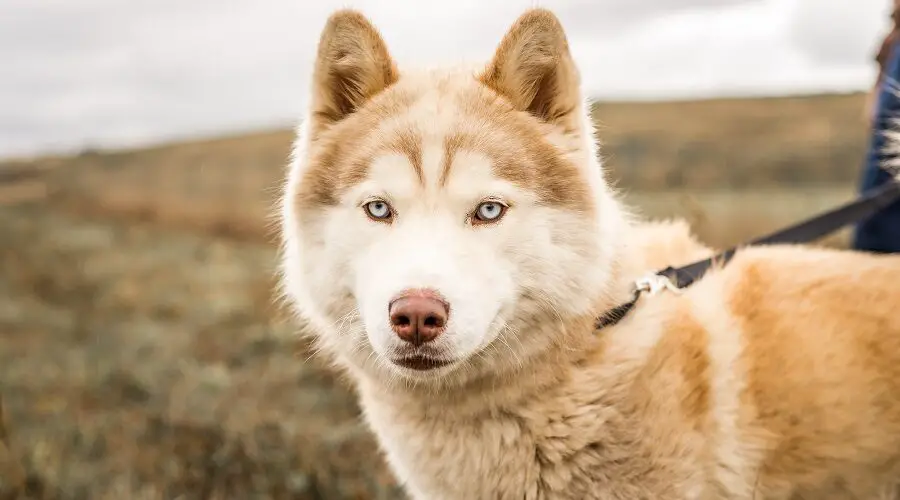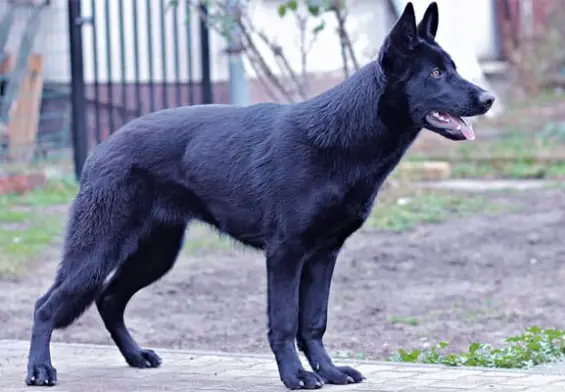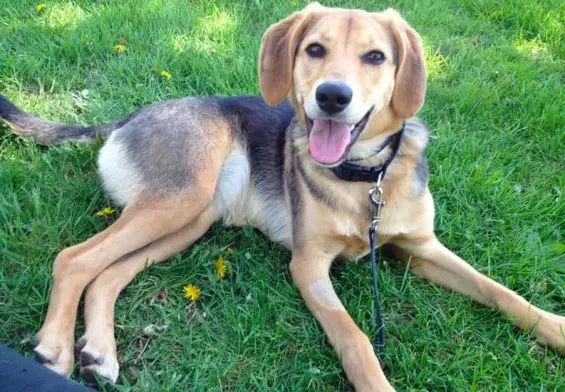List of Husky Dog Mixes Breeds
If you enjoy time outdoors, then you have perhaps also desired some energetic company. Huskies are some of the best dogs you can go out with—they are full of life and energy; they are, of course, also loveable. They are a gentle breed that mostly wants to have fun.
Naturally, they have heavy coats and experience much shedding; this can be discouraging, along with the fact that huskies do better in cool environments. Nevertheless, you may not be disappointed with their level of intelligence or love that they can bring to your family. If you are active, then a husky mix could be the breed for you.
Huskies trace their history to northeastern Asia, where they helped out with work and provided families companionship. Due to their high energy and the nomadic needs for their people to keep moving, breeders loved huskies during harsh conditions.
In the 1900s, huskies started to grow in popularity, especially at sled races. The world knew and loved more about them when a team of huskies, in 1925, stopped the outbreak of diphtheria in Alaska after their prompt medicine delivery.
Husky mix
If you think of getting a husky mix, you will be happy to know that there are many available. Unfortunately, most of these adorable and intelligent dogs end up in shelters; it is a good thing, nonetheless, that they are out of the streets. Why don’t you rescue a husky today?
You can spend a lot of money on designer breeds, or you can rescue a husky from a shelter and introduce them to a new home. It will cost you a lot less to get the dog you are looking for, and at the end of the day, you will be doing something great.
You may have some concerns about dogs bred in shelters or rescues; I would understand. Generally, Husky mixes tend to be stubborn and, most times, independent—regardless of where you get one. Training or handling them can be difficult. They also get sensitive quickly and can behave recklessly when bored.
It is a good idea to train your dog at an early stage to appreciate the surroundings and the people and creatures in it. The more they connect with what surrounds them, the easier they will be to do things. They are sociable but can get cagey; so, find a subtle approach to reach out.
You will love that these dogs are protective. Most parent mixes provided companionship and hunting support in the old days; husky hybrids possess the same trait. Therefore, strangers may not always be welcome to a home with these active dogs—not to worry; they are not aggressive. They can just bark and behave displeasingly.
If you get your mix from a shelter, then training can as well be challenging, especially before your furry friend gets used to their surroundings. While some breeds are easier to learn and introduce new things to, others may require more patience and time.
Your furry friend may not mind much of your absence at times; unlike most dogs kept as pets, they do not get anxious quickly. However, that does not mean they do not get bored. Over time, they will be irritated when there is little to no activity. When they are, they will probably get destructive.
Whenever it is possible, therefore, do something with your pup. Go out for some minutes of play, run, or hike. Teach them something new—they love challenges and introductions and will easily take to new tricks. These dogs require much of your activity when their energies are high; if you can match it up, then you are sure to have a good time.
Unlike other dog breeds, husky mixes are a generally healthy breed. You may not note diseases prone to most or genetic conditions. Nevertheless, you should watch out for illnesses that come every once in a while. Visit a vet and take their recommendations; try to uplift your pets’ spirits so that they are happy.
While it can depend on various factors, most husky mixes live for long, even more than their parent breeds. Not all mixes, however, will register such.
Are you worried that you may not get the exact husky mix of your preference in a shelter? You could be wrong. If you are looking for puppies, then designer breeds are not all the solution—shelters and rescue homes have plenty of them. What is more, you can get the dog of your preferred mix and breed in no time.
Alusky
Aluskies (Alaskan Malamute + Husky) grow to 26 to 28 inches and weigh between 60 and 100 lbs. Most live for 10 to 15 years. New parents may find them complicated due to their independent nature—they will need consistency. Rather than punishing them, you can consider positive reinforcement; remember to be firm and consistent.
They have a dense coat that does not do them good in warm environments; they also shed a lot and require regular brushing. They are not good with children.
American Bullsky
American Bullskies (American Bulldog + Husky) measure an average of 20 to 24 inches and weigh between 50 and 115 lbs. they live for 10 to 12 years. Besides their energy, they are also loving and loyal. They tend to be independent and intelligent; therefore, they do well with consistent positive reinforcement.
They are suited for the outdoors and can make ideal running, camping, or hiking companions. They love children but can be overprotective—supervision is mandatory.
Aussie Siberian
Aussie Siberians (Australian Shepherd + Husky) measure an average of 18 to 25 inches and weigh between 40 and 65 lbs. They live for 12 to 15 years. You may find them to be energetic, protective, and loyal. They will, therefore, suit your family if you love the outdoors and are active. They love kids but need training and close supervision.
Their independence calls for dedication and experience. You will also have to be around most times due to their attachment. They do well on high-performance diets.
Samusky
Samuskies (Samoyed + Husky) grow to 20 to 24 inches and weigh an average of 40 to 60 lbs. They also live for 12 to 15 years. They are not only intelligent but also loyal. They are adorable, sociable, and enjoy family time. However, they also have thick coats that do not serve them well in hot environments; they shed a lot and require plenty of brushing.
Thanks to their intelligence, training them is easy; they are thus suitable for first-time parents. They are good with children.
Bernese Mountsky
Bernese Mountskies (Bernese Mountain Dog + Husky) grow to 26 to 27.5 inches and weigh between 48 and 88 lbs. They also live for 12 to 15 years. These dogs are active and sociable; they can be stubborn but are generally good with instructions. They need reinforcement training, regular exercise, and grooming.
They love the outdoors and will enjoy hiking but only in cool climates due to their heavy coats. They will do well on large-breed dog diets, and for healthier joints, you can consider enhancements of glucosamine and chondroitin.
Blue Heesky
Blue Heeskies (Blue Heeler + Husky) grow to an average of 18 to 24 inches and measure between 40 and 60 lbs. Most live for 11 to 15 years. These beautiful dogs are not good with kids due to their high energy; they will also need some daily exercise to keep them calm. Nevertheless, they remain independent, loyal, and intelligent.
Their successful exercise should entail consistent training, some firmness, and regular mental stimulation. A new parent, therefore, may face a hard time.
Bordsky
Bordskies (Border Collie + Husky) grow to an average of 18 to 22 inches and weigh between 30 and 45 lbs. Most also live for 15 to 17 years. You may love them for their energy, intelligence, and size, which suits most homes—they thus look attractive, are friendly, loyal, and are good with children.
They tend to become destructive when understimulated or bored. They are both easy and fun to train, additionally being competitive and agile.
Siberian Boston
Siberian Bostons (Boston Terrier + Husky) measure an average of 15 to 20 inches and weigh between 20 and 40 lbs. Most live for 11 to 16 years. These dogs are suited for warm environments with their short coats. They are adorable, happy, and energetic dogs that come in manageable sizes. They love and are good with children and family time.
New parents may love these dogs, thanks to their easy training. Despite their once-in-a-while stubbornness, their intelligence makes things easy.
Boxsky
Boxskies (Boxer + Husky) grow to an average of 30 to 35 inches and weigh between 35 and 75 lbs. They live for 12 to 15 years. These dogs are loyal, protective, and possess high energy. You should socialize and train them from an early age; they are not good with small children but do well with older kids.
Their independence outweighs their intelligence, making these Boxskies complicated to train; they will also require plenty of patience and are thus not suitable for first-time parents.
Bullsky Mastiff
Bullsky Mastiffs (Bullmastiff and Husky) grow to an average of 20 to 24 inches and weigh between 50 and 110 lbs. Most also live for 10 to 13 years. These dogs are full of energy and loyal. However, they can also get stubborn and take plenty of time and patience to train. Nevertheless, they are good with children and love to bond.
They do well outdoors and in adventures and will often cause trouble if not exercised or trained enough. Proper nutrition is critical to their large size.
Horgi
Horgis (Corgi + Husky) grow to an average of 13 to 15 inches and weigh between 20 to 25 lbs. Most also live for 12 to 15 years. These dogs will suit families looking for small and medium-sized pets; they have fluffy coats and are friendly. They do well with children and love the company of their caregivers.
They can be wary of strangers but take well to early training and socialization. They require regular exercise and mental stimulation.
Dachsky
Dachskies (Dachshund + Husky) grow to an average of 8 to 20 inches and measure between 16 and 60 lbs. Most also live for 10 to 14 years. These are not the friendliest dogs you will come across; they are also wary of strangers. They can, however, get better with consistent and patient training. Eventually, they bond with the family.
While they love the outdoors and would do with walks, they may not like the idea of running. Nevertheless, you will have to do some regular exercise; generally, these dogs suit an apartment lifestyle.
Dalmatsky
Dalmatskies (Dalmatian + Husky) grow to an average of 16 to 22 inches and weigh between 45 and 60 lbs. Most live for 11 to 15 years. These dogs are friendly and come with plenty of energy. They will need a lot of training and daily exercise; consistent, firm, and patient training could work well with them.
They have short coats and can be so fun to play with. They can, however, grow overweight and develop separation anxiety when left alone.
Dobersky
Doberskies (Doberman + Husky) grow to an average of 22 to 26 inches and measure between 48 and 75 lbs. Most grow for 10 to 14 years. These dogs are not only loyal but can also be mildly protective and are intelligent. They are wary of strangers and will need early training and exposure.
They are alert and intelligent, making them easy to train. Every once in a while, these dogs can be independent. They will do well with regular training and stimulation.
English Bullsky
English Bulskies (English Bulldog + Husky) grow to between 15 and 23 inches and weigh an average of 40 to 60 lbs. Most also live for 10 to 14 years; families love them for their adorable, loyal, and happy nature. They possess plenty of energy and are active. They also have heavy coats and short muzzle, making them susceptible to overheating.
Besides their intelligence, these dogs can get independent and stubborn; they will require consistent, firm, and patient training. A new parent may face challenges.
French Bullsky
French Bullskies (French Bulldog + Husky) grow to between 12 and 22 inches and weigh an average of 35 to 45 lbs. Most live for 10 to 14 years. These dogs come in medium sizes, making them ideal for families and a variety of individuals. They are intelligent and will do well with plenty of regular training and stimulation.
Due to their stubbornness and independence, they may require consistent and patient training. They are also good with children and enjoy time with the family.
Gerberian Shepsky
Gerberian Shepskies (German Shepherd + Husky) grow to between 20 and 25 inches and weigh an average of 45 to 88 lbs. Most also live for 10 to 14 years. You may find these beautiful dogs to be intelligent and energetic, protective, and loyal. They tend to develop separation anxiety and become destructive when left alone; it is advisable, therefore, to keep them active and exercise daily.
They are relatively easy to train but call for consistency and a lot of patience. They serve watch purposes well but can get protective and territorial.
Goberian
Goberians (Golden Retriever + Husky) measure between 20 and 24 inches and measure an average of 45 to 90 lbs. Most also live for 10 to 15 years. These are intelligent and energetic, friendly, and generally happy dogs; they enjoy family time and love children. They are a little stubborn but easily sociable and receptive to training.
They do well with plenty of regular exercises and physical training. They require mental stimulation but face the risk of growing overweight on overfeeding.
Great Husky
Great Huskies (Great Dane + Husky) measure between 21 and 35 inches and weigh an average of 90 to 130 lbs. Most also live for 10 to 12 years. These are brave, loyal, and intelligent dogs that can be easily sociable. They have some independence and serve great watching purposes.
Their independence makes it difficult to train; therefore, they call for experience, consistency, and patience. First-time parents may find them complicated.
Pyrenees Husky
Pyrenees Huskies (Great Pyrenees + Husky) measure between 18 and 22 inches and weigh an average of 75 to 100 lbs. Most also live for 12 to 15 years. These dogs are large, intelligent, active, and easily lovable. They enjoy the outdoors and would do well in an active family. They are also independent, which makes training challenging.
For successful exercise and regular training, you will need to be consistent and patient. These dogs love kids but are not good with smaller children.
Husky Jack
Husky Jacks (Jack Russell + Husky) measure between 17 and 19 inches and weigh an average of 30 to 35 lbs. Most also live for 11 to 16 years. They are generally small, cute dogs that are very intelligent. You may also find them complicated to train due to their independence and stubborn nature.
They require mental stimulation to calm down and behave. These dogs love the outdoors and are good with kids but are not best for smaller children.
Siberian Retriever
Siberian Retrievers (Labrador + Husky) measure between 20 and 28 inches and weigh an average of 40 to 60 lbs. Most live for 10 to 12 years. These fogs are intelligent, loyal, and playful. Their activity suits large families, and due to their friendliness, you may find them to be good with children—they love their company.
They are relatively easy to train. Since these dogs can get stubborn or independent every once in a while, they do well with consistent, patient training.
Newfoundsky
Newfoundskies (Newfoundland + Husky) measure between 21 and 28 inches and measure between 60 and 120 lbs. Most live for 10 to 12 years. These are patient, active, and outgoing dogs; they are huge and enjoy family time. They love kids and can be great around smaller children with proper training.
They have thick coats and thus experience heavy shedding, which will require plenty of brushing. They will do well on giant breed dog diets. They are relatively easy to train and are not so active.
Pitsky
Pitskies (Pit Bull + Husky) measure between 16 and 25 inches and weigh an average of 30 to 80 lbs. Most live for 12 to 16 years. These dogs are intelligent and loyal; they are adorable, loving, and easily lovable. They, therefore, tend to develop separation anxiety. You will, therefore, need to be around most times and provide adequate training.
Despite their intelligence and thus ease in training, you will require some consistency and patience. These dogs also do better with positive reinforcements.
Pomsky
Pomskies (Pomeranian + Husky) measure between 10 and 15 inches and weigh an average of 20 to 30 lbs. Most also live for 13 to 15 years. They are cute, energetic, and intelligent. However, they can be challenging to manage. They require regular exercise—physical and mental stimulation; otherwise, they can get destructive.
Their stubborn nature makes training difficult, but it eases due to their high food motivation. These dogs are friendly and love children; they need early exposure and consistent, patient training.
Hug
Hugs (Pug + Husky) measure between 10 and 23 inches and weigh an average of 15 to 60 lbs. Most live for 12 to 15 years. These cheerful and adorable dogs suit families well. They have short hair and enjoy the outdoors; daily, they will require some exercise and mental stimulation.
Their alertness makes them good watchdogs. They also tend to be stubborn, thus a little challenging to train. Nonetheless, they make up for this with their intelligence.
Beaski
Beaskis (Beagle + Husky) measure between 16 and 22 inches and weigh an average of 35 to 50 lbs. Most live for 11 to 14 years. These dogs are loyal, loving, and adorable; they are active and require regular stimulation or activity. They love the outdoors but can get destructive when bored or left alone for long.
First-time parents may love these dogs due to their high intelligence, making them easy to learn and thus train. Also, they do not cause much trouble.
Rottsky
Rottskies (Rottweiler + Husky) measure between 20 and 24 inches and weigh an average of 55 and 80 inches. Most live for 10 to 14 years. These are not the most hyper dogs but strong and athletic; they are good with long-distance walks and runs. They do well with regular physical and mental stimulation; otherwise, they can get anxious.
Their intelligence and eagerness to learn new things make it easy to train them. These dogs need early training and exposure to help with their socialization with other dogs.
Sharberian Husky
Sharberian Huskies (Shar-Pei + Husky) measure between 20 and 25 inches and weigh an average of 35 to 55 lbs. Most also live for 12 to 15 years. These dogs are intelligent, loyal, and have some energy; they can be independent and protective. They are not the most active dogs but need regular exercise and mental stimulation.
First-time parents may find their independence and stubborn nature challenging to handle. They will require consistent and patient training.
Siberpoo
Siberpoos (Poodle + Husky) measure between 13 and 22 inches and weigh an average of 45 and 60 lbs. Most also live for 10 to 13 years. These dogs are agile, athletic, and have some energy. They love the outdoors and require regular exercise and mental stimulation; walks, playtime, and even hikes will do.
They are okay in varying climates. They are also friendly but not ideal for young children and old adults. They can develop separation anxiety and will need plenty of your presence.





